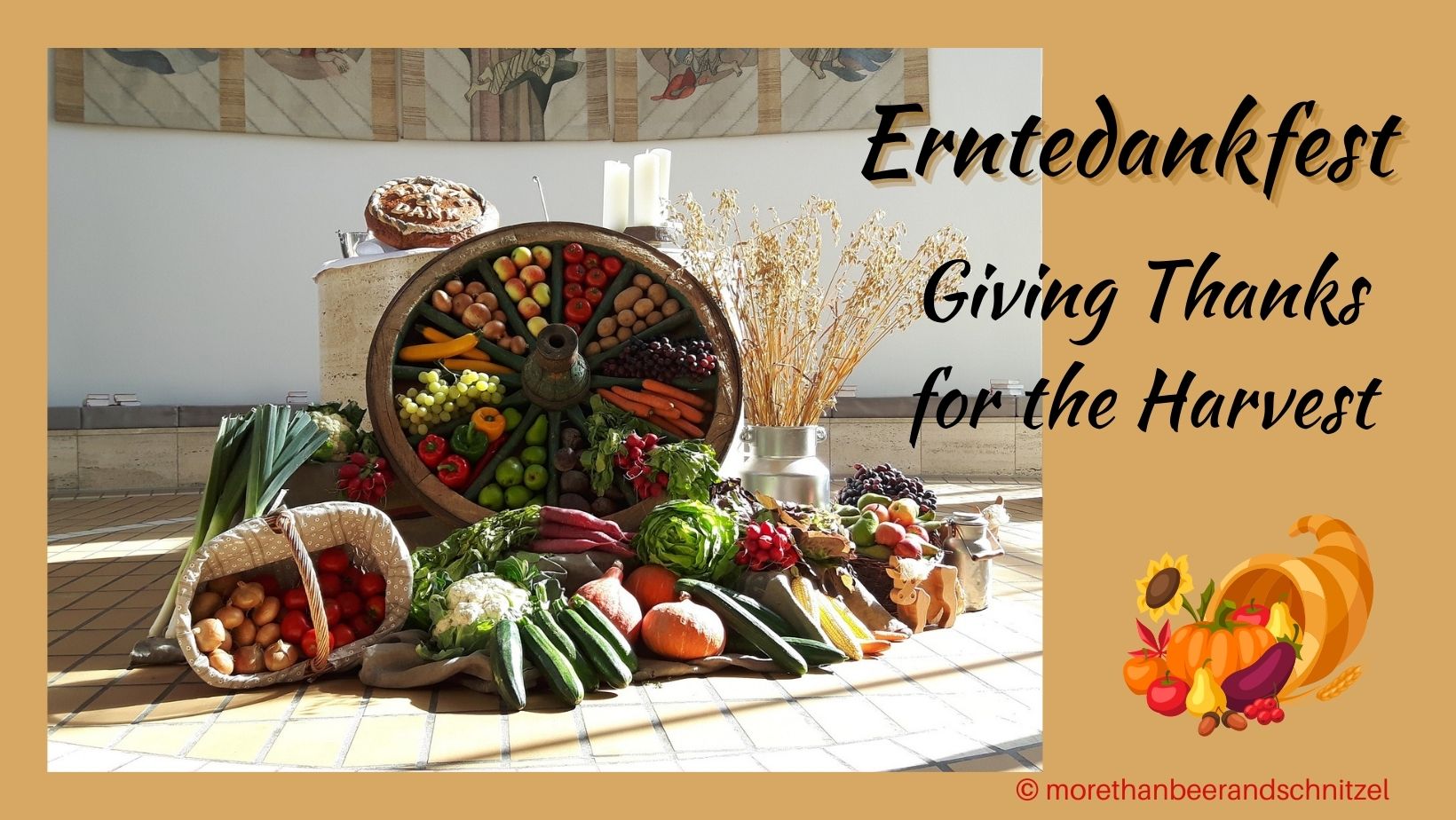The first Sunday in October is Erntedankfest in Germany. It is a festival to give thanks for a plentiful harvest and is traditionally a religious celebration in the Catholic as well as in the Lutheran church. It is not mandatory for a parish to celebrate Erntedank and it is also not written in stone to be held on the first October Sunday.
It was only in 1972 that the German Bishops’ Conference set the day of the harvest festival on the first Sunday in October. In the Protestant Church it can also be on St. Michael’s Feast Day (September 29th) or Sunday after it, which the Prussians set as Erntedank in 1773. But the dates will vary in different communities depending if it’s combined with other events or festivals.
Since the harvest depends on the climate of the region, there never was one specific date or day when a harvest festival was celebrated. You can still see Erntedankfeste on different dates in Germany and Austria. Often the celebration is combined with the Almabtrieb (when the cattle comes down from the mountain) or a Kirchweih (parish fair).

Origin
We find harvest festivals in the Christian church as early as the 3rd century but the tradition goes further back. In antiquity, people celebrated the harvest and thanked the gods for it. The Romans held a seven day celebration in April called Cerealia for the goddess of grain, Ceres, (that’s where the word cereal comes from). It was probably to make ensure that the harvest would be plentiful.
We find these kinds of festivals in all cultures around the world which shows us how much we rely on nature to provide for us. While we might not be as dependent as generations before us were, it is still a good reminder that we live in and with nature and depend on her for nourishment.

Customs
Most Erntedankfeste are connected to the church in the community. The church and altar are decorated with crops, vegetables, fruits, and flowers. The pastor or priest will hold a special sermon to thank God for what nature has provided.
Depending on the region, you will find many different customs around Erntedank. The decorating with and displaying the fruits of the harvest are however an overarching motif.
Erntewagen and Ernteumzüge
Some communities have processions with decorated wagons and floats (Erntewagen). Groups like the volunteer fire department, the sports clubs, or the Landfrauen (organization of women in rural areas) participate in and/or are involved in organizing these processions (Umzüge). Marching bands take care of the musical backdrop.

Erntedankkrone
In many processions, a Erntedankkrone (harvest crown) is carried to the church where it is displayed. In other communities the crown is a decorating element in the church itself. The crown is made from ears of wheat, rye, barley, and oats. But other variations exist; in areas where wine is dominant, a crown maybe made from grape vines.
The custom of the crown of corn goes back to feudal times. The serfs (the farmers that worked the land for the feudal lord) would make a crown from the ear of grain and hand it over to their lord as a sign that the harvest was completed.




Ernterad
Erntedankräder (wheels) are a common decoration outside and inside a church. You place the fruits and vegetables in the areas between the spokes of an old large wagon wheel. It’s a unique way to display the harvest but also has a connection to farm work.
You might also see a mosaic made from grains, or decorated bread with a quote from the bible (Unser täglich Brot – Our daily bread) or a “Danke“.



Strohfiguren
In some communities, you can see giant straw figures (Strohfiguren, -puppen) standing in the fields or the entrance to a town or village. Often these figures will stay in the field as an offering. Sometimes they are also burned.


Most Erntedank celebrations end with a get together of all members of the community, with coffee and cake, or other food and drink.
Erntedanklieder
There might not be as many songs for Erntedank as there are for Christmas, but there are a couple that are sung in churches, schools, and pre-schools. I added some to the youtube playlist.
One of the more popular ones is “Wir pflügen und wir streuen” (We plough and we scatter) by Matthias Claudius. He wrote the poem in 1783 and it was published as “Das Bauernlied” (The peasants’ song).
While Claudius and others set the poem to music but the melody that is mostly used is by Johann Abraham Peter Schulz from 1800. In 1861, Jane Montgomery Campbell wrote the English translation “We plough the fields and scatter”.
Other Erntedanklieder and Herbstlieder (fall songs) include “Bunt sind schon die Wälder” with text by Swiss poet Johann Gaudenz von Salis-Seewis from 1782, and “Herbstlied” by August Heinrich Hoffmann von Fallersleben (he is the one who wrote “Das Lied der Deutschen” whose third stanza is Germany’s national anthem).
More here:
- Erntedankfest in Bardowick (photos)
- YouTube Playlist (processions, songs, information)


